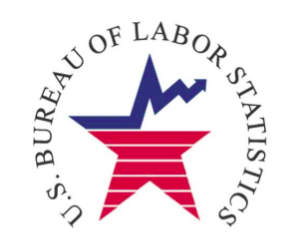- Image via Wikipedia
According to recent reports and forecasts by housing analysts, the three-year descent in home prices appears to be at an end. Eight cities, including San Francisco, showed price increases in May, up from four in April, and one in March, according to Standard and Poor’s/Case-Shiller Index. For the first time since early 2007, the index of 20 major cities was virtually flat, rather than down.
KEEP THIS IN MIND
• Earlier reports show that sales of existing homes nationwide rose last month for the third consecutive month, while sales of new homes increased in June by the largest percentage in eight years, according to the NATIONAL ASSOCIATION OF REALTORS® (NAR) and the U.S. Commerce Dept., respectively.
• Although some skeptics believe the market is pausing before home prices decline further, the median price in California’s housing market appears to be stabilizing. June marked the fourth consecutive month of rising home prices and the second largest gain on record for the month of June, based on statistics dating back to 1979. The year-to-year decline in June also was the smallest in the past 16 months.
• The S&P/Case-Shiller price index for 20 cities showed a half-percent gain when May was compared with April. It was the first month-over-month increase in the index in 34 months. “It is very possible that years from now we will say that April 2009 was the trough in home prices,” said Maureen Maitland, vice president for index services at Standard & Poor’s.
• One explanation for the increase in median prices is the rise in demand from buyers, especially first timers taking advantage of the $8,000 federal tax credit, which expires in December. The NATIONAL ASSOCIATION OF REALTORS® (NAR) is lobbying for the tax credit to be extended and to be replaced with a $15,000 credit for all buyers.
• Another factor in the market’s resurgence is the prevalence of foreclosures, which make up about a third of all existing home sales. “Although another surge of foreclosures is expected later this year, demand remains strong, so the market may be able to absorb more distressed properties without significantly impacting the median price,” said C.A.R.’s Chief Economist Leslie Appleton-Young.
To read the full story, please click here.
Related articles by Zemanta
- Slide in Home Prices Is Slowing Down, Index Shows (nytimes.com)
- US housing prices ‘rose in May’ (news.bbc.co.uk)
- Home prices up for 1st time in 3 years (money.cnn.com)
Filed under: Buying, Economy, Mortgage, Real Estate Market, Tax Issues | Tagged: Business, Case-Shiller Index, Foreclosure, National Association of Realtors, San Francisco, Standard & Poor, U.S. Housing Market, United States | Leave a comment »





![Reblog this post [with Zemanta]](https://i0.wp.com/img.zemanta.com/reblog_a.png)










Gov Regulation Clogs Pipes w/ Home Valuation Code of Conduct #HVCC #realestate
It’s no secret that many facets of lending and real estate have changed as a result of the credit crisis. In addition to tightened lending practices that resulted from rising mortgage delinquencies, Washington has been heavily involved in altering the way lenders do business today.
Two individual pieces of legislation impacting our business need to be taken into account when determining closing dates for purchase transactions.
Home Valuation Code of Conduct – The Home Valuation Code of Conduct (HVCC) went into effect May 1, 2009. Intended to shield appraisers from undue influence from loan officers and lenders, this legislation installed a “firewall” between those individuals directly involved in the origination of the loan from the selection of and contact with appraisers.
HVCC also requires that borrowers receive a copy of the appraisal a minimum of three days in advance of closing. Part of the kicker here is that “received” is considered, in effect, three business days after the appraisal has been mailed to the borrower.As HVCC requires a firewall between the originator and the appraiser, the time to receive an appraisal has increased, in some cases by as much as two weeks or more. While this may not always be the case, it is important to take into consideration when considering closing dates. Today, conservative closing dates are mandatory to properly manage expectations of all parties.
Housing and Economic Recovery Act – The Housing and Economic Recovery Act (HERA) amends and impacts several aspects of obtaining a mortgage, the disclosures required for borrowers, and the timing of their delivery. This impacts the minimum time required to close, and should any changes be made to a loan application that could impact the Annual Percentage Rate (APR), this could impact the closing date.
Other than paying for a credit report, lenders may not accept any additional fees from a borrower until four business days after disclosures have been provided to or mailed to a borrower. This has the potential to delay several aspects of the application process.
Finally, upon making application, a borrower is provided a Truth in Lending (TIL) statement, detailing the total expected costs that could be incurred over the life of the loan. Should anything change in the loan application that could change the APR by more than .125%, a new TIL must be reissued to the borrower a minimum of 3 business days before closing. Items impacting the APR could include a borrower accepting a higher interest rate than initially qualified by floating their rate at application, a change to the loan amount, a change in product, a change in closing date, and any changes to fees.
What Now? – While there is more we can discuss on the specifics of these legislative implications, I felt it important enough to let you know now that I would not recommend you write purchase contracts with short closing time frames.
This video can provide both my buyers and sellers the rationale behind not scheduling closing dates in advance of 30 days at a minimum and ideally not less than 45 days. If you want to see some Pres and Media on HVCC look here and if you wish to just sign the petition against it click here. You can also view signatures here.
This whole matter is a knee jerk reaction to abuses in the system, causing too much regulation and hence the clog, besides being generally impractical. Thanks for reading and commenting and, please pick up the phone and call me if you have more questions.
Sincerely,
Carlo
Filed under: Buying, Commentary, Current Events, Petition, Real Estate Market, Selling | Tagged: Annual Percentage Rate, Appraiser, Business, Housing and Economic Recovery Act of 2008, Loan, Mortgage, Real estate, Washington | Leave a comment »